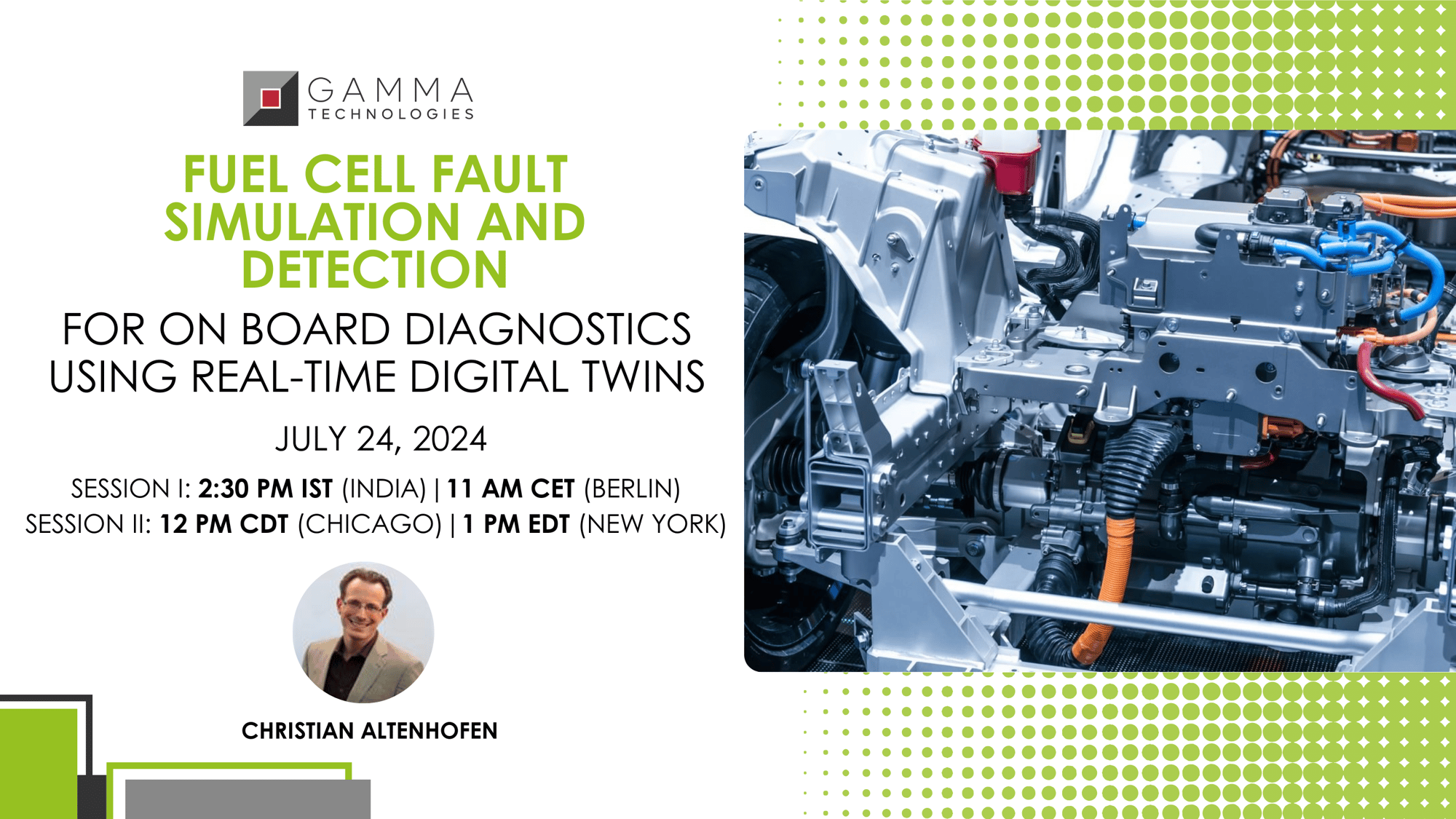
-
Develop strategies for designing and testing OBD systems efficiently through virtual testing methods like MIL, SIL, and HIL simulations.
-
Enhance fuel cell powertrain durability by simulating and addressing failure modes in key components like compressors, pumps, and cooling systems.
-
Ensure OBD regulation compliance by accelerating control strategy development and software validation through MIL and SIL testing with high-fidelity models on HIL systems.
Abstract
The modern automotive industry is facing challenges of ever-increasing complexity in the electrified powertrain era. On-board diagnostic (OBD) systems must be thoroughly validated and calibrated through many iterations to function effectively and meet the regulation standards. Their development and design process is more complex when prototype hardware is not available, and therefore virtual testing is a prominent solution, including Model-in-the-loop (MIL), Software-in-the-loop (SIL), and Hardware-in-the-loop (HIL) simulations. Virtual prototype testing, relying on real-time simulation models, is necessary to design and test new era’s OBD systems quickly and on a large scale. The new fuel cell powertrain involves new and previously unexplored failure modes. To make the system robust, simulations are required to identify different failures. Thus, it is imperative to build simulation models that can reliably reproduce failures of components like the compressor, recirculation pump, humidifier, or cooling systems. As OBD regulations become more stringent and advanced, it is challenging to keep pace and perform comprehensive testing in real-world environments. In such scenarios, MIL, SIL, and HIL testing become more prevalent. MIL and SIL testing provide a quick way for control engineers to develop new strategies at the system level to adhere to new OBD regulations. On the other hand, simulating high-fidelity physics-based Real-Time plant models on HIL systems allows engineers to perform fault insertion tests on the software and leave the lab environment with a certain degree of guarantee that the software would perform well in real-world conditions. This paper will present the necessary fuel cell model developments to reproduce relevant failure modes, which in turn can be detected by a control model developed in Simulink. Then the viability of this approach will be demonstrated by showing MIL and HIL test results.
Topics include:

Christian Altenhofen | Presenter
Applications Engineering Manager | Engine & Reactive Flow Systems at Gamma Technologies GmbH
.png?width=1252&height=301&name=GAMMA%20Technologies%20logo_2022%20(1).png)